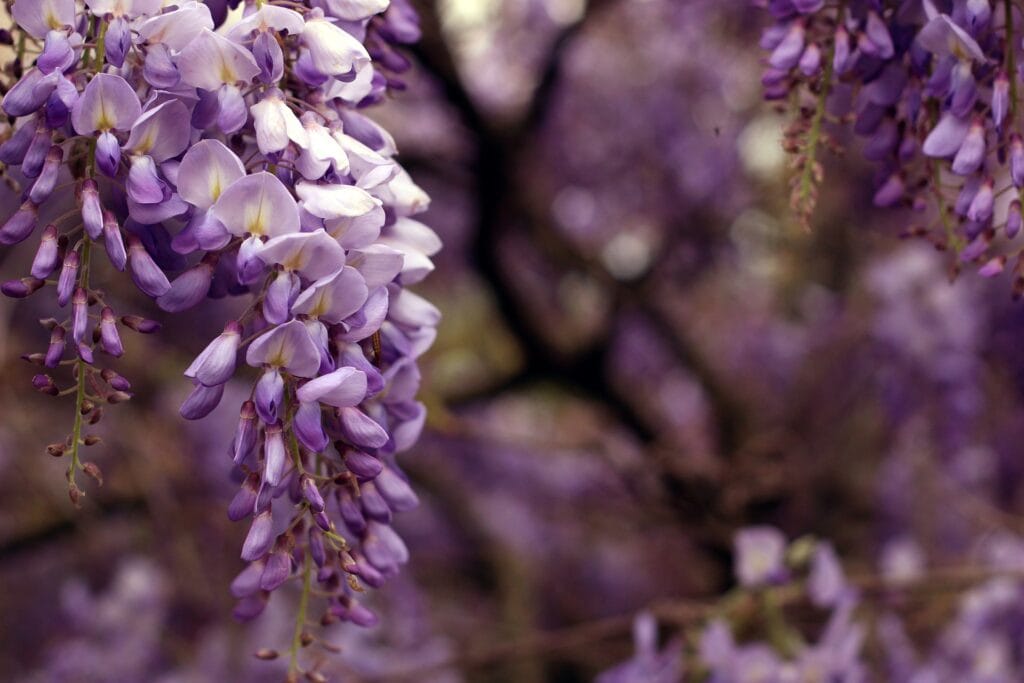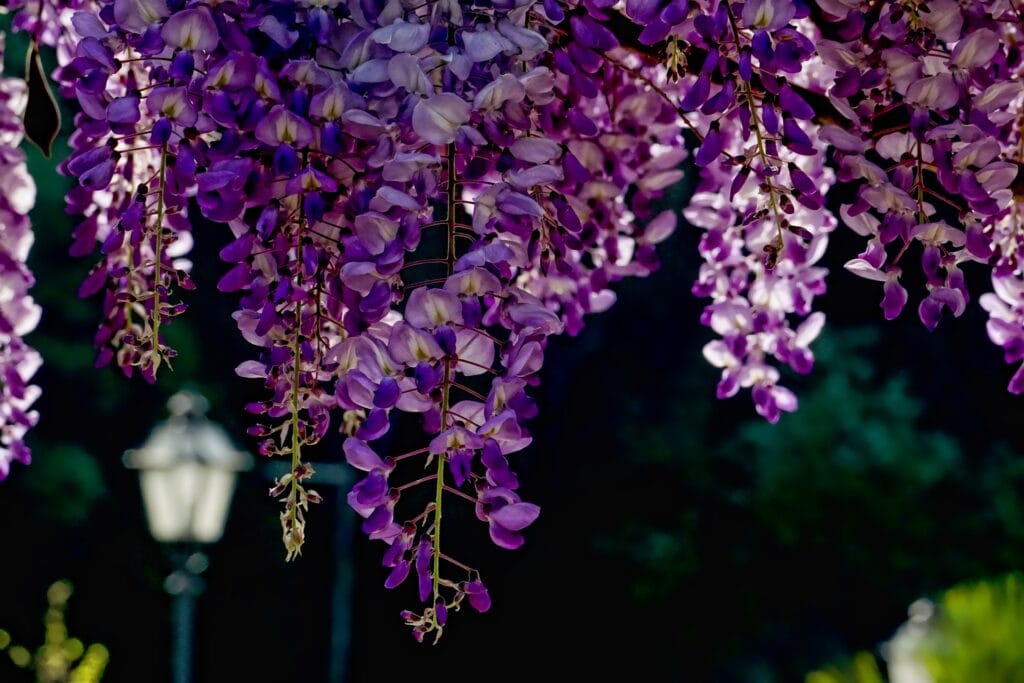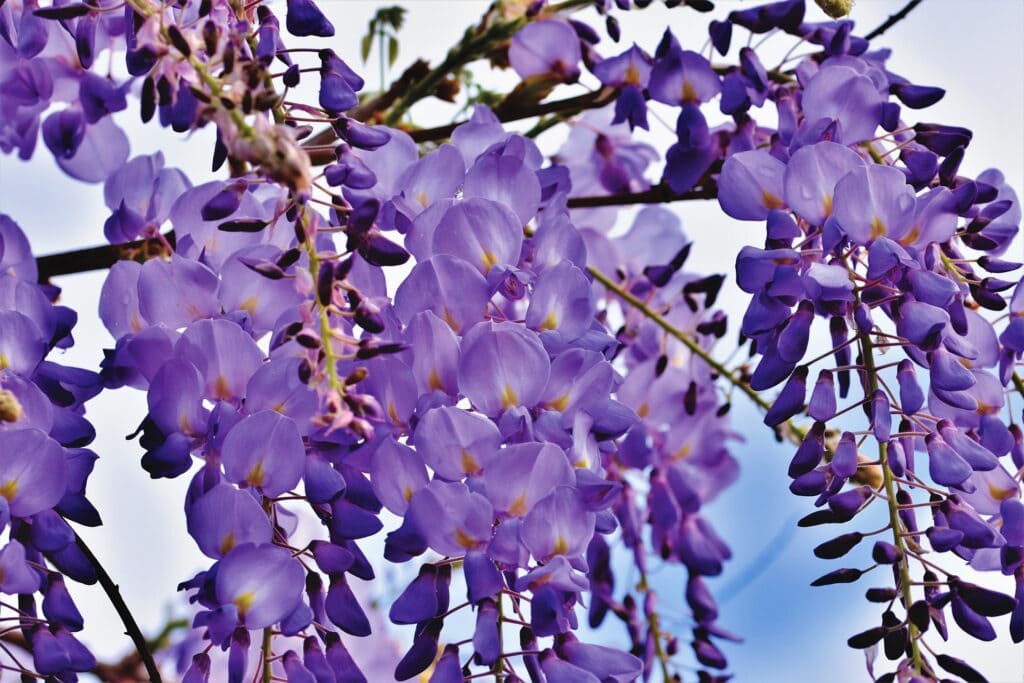When Do Wisterias Bloom? Care & Tips
-
Codee Chessher
- Last updated:

Wisteria is a type of climbing shrub that’s prized for its gorgeous violet blooms, and some parts of Asia use its parts to brew an herbal tea. Native to North America and East Asia, wisterias are considered signs of luck, romance, and success. Like most flowering plants, wisteria only blooms for part of the year. In most cases, they begin to bloom in May, with the blooming period lasting 2–3 months. In some cases, they’ll bloom around August again but with smaller, weaker flowers.
While wisteria is rapidly growing, new plants won’t bloom for 3–5 years. By ensuring the plant has the right amount of sunlight, water, and nutrients, you can encourage your plant to bloom as soon as 2 years after planting. Usually, the first 2 years are when the plant is developing its tendrils and learning how to climb your trellis or fence, with blooms coming later on.
Watering Wisteria
Wisterias are delicate plants that dry out easily during hot weather, making them better for cool climates. When there’s no rain in your near future, water your wisteria every 2–3 days. You can check it daily if you think it’ll dry out sooner. Simply put your finger into the soil and test if it’s moist or not. You want to water the plant before the soil dries out. However, don’t overwater and flood the roots, either!

Getting Enough Sun
Wisteria may grow in partial shade, but they won’t bloom. For beautiful blooms, plant your wisteria in a southern-facing area where it can get 6–8 hours of sunlight every day. Generally speaking, more sunlight provides the plant with more nutrients, which translates to more numerous and full blooms.
Fertilizing Wisteria
You’d think that wisteria would benefit from nitrogen-rich fertilizers, but they actually do better with low-nitrogen fertilizers. A little nitrogen can help encourage blooming, but too much will cause the plant to grow a lot of foliage but few blooms. If you have a wisteria that won’t bloom, try reducing the nitrogen level in the soil. For sandy, loose soil, you should supplement the ground with potassium.

Proper Pruning Technique to Encourage Growth
Wisteria spreads very quickly, and it’s easy for a plant to get out of control. Keeping the plant pruned will allow light and air into the vines, which encourages fresh, thick growth and bloom production. Under ideal conditions, prune wisteria judiciously every summer to remove unruly vines and excess foliage. Removing leaves will help the plant devote more nutrients to bloom production.
When to Plant Wisteria
Wisteria should be planted in the spring or fall while the vines are dormant. It’s recommended to use a cutting or buy established plants because growing from wisteria can take several years to yield blooms.
Location is important, too. Wisteria can be considered invasive and quickly overtake nearby structures. We recommend planting it on fences or floating trellises to prevent spreading onto your home.

How to Encourage Wisteria to Bloom
While invasive once established, wisteria is also notoriously slow to bloom when young. To encourage blooming, you can take a shovel and slice it into the bottom half of the plant’s roots. Don’t cut too much off! The plant will be shocked into reproducing, which makes the plant bloom. Don’t do this too early or you could stunt the plant’s growth, but it should work for a wisteria that won’t bloom after three to four years.
Conclusion
Wisteria is an invasive plant known for its beautiful lavender-like blooms. While they can take years to produce blooms, established plants bloom every spring for 2–3 months. Sometimes, they’ll even bloom again before fall sets in.
Featured Image Credit: Pixabay
Contents
